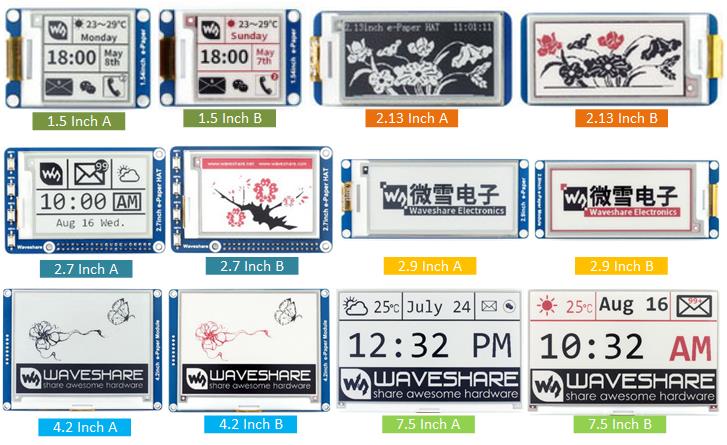This is the E-Ink / Paper display device integrated by the image display technology of Microencapsulated Electrophoretic Display (MED). This device has an approach to create a tiny spheres in which the charge color pigments are suspending the transparent electrode layer that moves depending on the electronic charge. The screen display patterns by reflecting the ambient light and no background light needed it is more clearer under the sunlight. This device is ideal choice application such as shelf label, industrial instruments, home and appliances, automotive, mobile devices such as E-Paper, E-Book, E-Reader and Smart Watch. The data communication of this device is using 3 wire, 4 wire SPI Serial Peripheral Interface that runs on 3.3v and generates 4 color, black, white, grey, and red.
Required Components
- Arduino Microcontroller, NodeMCU, Teensy Board, TeensyDuino, ESP8266 12, 12E, ESP8266 NodeMCU, ESPDuino, ATMEGA328 16/12, ATMEGA32u4 16/8/ MHz, ESP8266, ATMEGA250 16 MHz, ATSAM3x8E, ATSAM21D, Raspberry Pi, STM32 (Note: The Diagram below is using NANO. (please refer to the respective pin-outs)
- E-Ink / E-Paper 1.5 Inch A, 1.5 Inch B, 2.13 Inch A, 2.13 Inch B, 2.9 Inch A, 2.9 Inch B, 4.2 Inch A, 4.2 Inch B, 7.5 Inch A, 7.5 Inch B.
- 2.7 inch A and 2.7 B is for Raspberry Hat.
- Jumper Wires / DuPont Wires
- Solder Less Bread Board (Optional)
Wiring Guide
For bitmap c array generator and step by step guide how to use the software please refer to this link.
Source Code
This a test code for 1.54 inch & 2.9 Inch E-Ink / E-Paper display panel.
E-Ink / E-Paper Sample Codes & Libraries
1.5 Inch Model A | 1.5 Inch Model B | 2.9 Inch Model A | 2.9 Inch Model B
4.2 Inch Model A | 4.2 Inch Model B | 7.5 Inch Model A | 7.5 Inch Model B
Downlaod Image2LCD | Here
Downloads
- 1.5 Inch Datasheet | Model A | Model B
- 1.5 Inch Schematics | Model A | Model B
- 2.9 Inch Datasheet | Model A | Model B
- 2.9 Inch Schematics | Model A | Model B
- 4.2 Inch Datasheet | Model A | Model B
- 4.2 Inch Schematics | Model A | Model B
- 7.5 Inch Datasheet | Model A | Model B
- 7.5 Inch Schematics | Model A | Model B







Pingback:LuminOx O2 / Oxygen UART Optical Sensor Arduino | 14Core.com